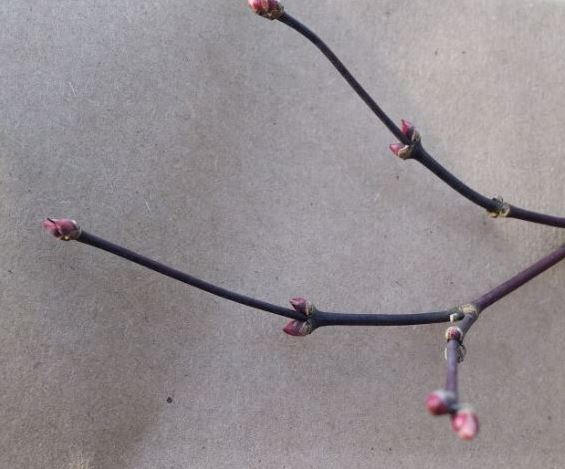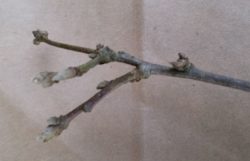
Tree Anatomy: Growth Buds
After a long, dark winter, the swelling buds on bare branches foretell the coming of an eagerly anticipated spring for many Portland area residents. A bud is an undeveloped part of the plant. Flower buds become blossoms, whereas growth buds develop into shoots.
Growth buds are the teardrop-shaped parts of the tree where new growth occurs. A branch grows longer due to growth at the terminal bud at the tip of the branch. The lateral buds are located at the nodes where the leaves attach to the branch. The terminal bud releases a hormone called auxin that suppresses the growth of the lateral buds on the same branch. Pruning the terminal bud causes the lateral buds to grow in the direction the lateral bud is pointing. The locations of these buds guide our arborists while they thin or shape the canopy of your trees and shrubs.
In the winter and early spring, identifying deciduous trees without their noticeable leaves, flowers and fruit requires close observation of the subtleties of the tree anatomy. The relative size, shape and orientation on the twig of the growth buds are used in winter tree identification. The opposite arrangement of the growth buds on the twig seen above is an identifying characteristic of maples. The alternate arrangement of the growth buds as well as the clustering of buds at the end of the twig seen below are identifying characteristics of oaks.

As the awakening spring lures you outdoors, notice the growth buds on the trees and shrubs around you. The variety of color, shape and arrangement might surprise you.


